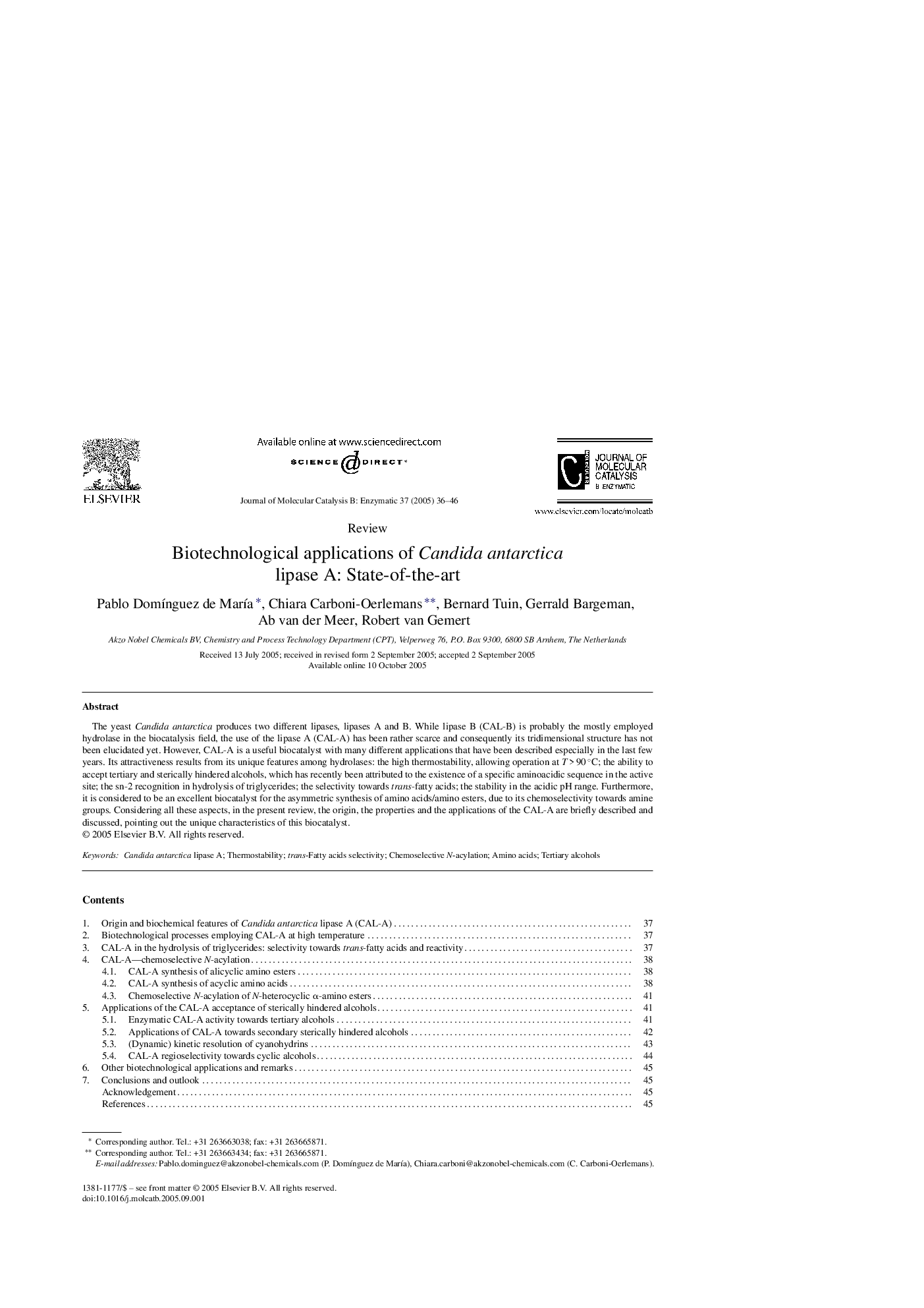| Article ID | Journal | Published Year | Pages | File Type |
|---|---|---|---|---|
| 9616698 | Journal of Molecular Catalysis B: Enzymatic | 2005 | 11 Pages |
Abstract
The yeast Candida antarctica produces two different lipases, lipases A and B. While lipase B (CAL-B) is probably the mostly employed hydrolase in the biocatalysis field, the use of the lipase A (CAL-A) has been rather scarce and consequently its tridimensional structure has not been elucidated yet. However, CAL-A is a useful biocatalyst with many different applications that have been described especially in the last few years. Its attractiveness results from its unique features among hydrolases: the high thermostability, allowing operation at T > 90 °C; the ability to accept tertiary and sterically hindered alcohols, which has recently been attributed to the existence of a specific aminoacidic sequence in the active site; the sn-2 recognition in hydrolysis of triglycerides; the selectivity towards trans-fatty acids; the stability in the acidic pH range. Furthermore, it is considered to be an excellent biocatalyst for the asymmetric synthesis of amino acids/amino esters, due to its chemoselectivity towards amine groups. Considering all these aspects, in the present review, the origin, the properties and the applications of the CAL-A are briefly described and discussed, pointing out the unique characteristics of this biocatalyst.
Related Topics
Physical Sciences and Engineering
Chemical Engineering
Catalysis
Authors
Pablo DomÃnguez de MarÃa, Chiara Carboni-Oerlemans, Bernard Tuin, Gerrald Bargeman, Ab van der Meer, Robert van Gemert,
